Past Webinars

Data and Methods for Prioritizing User-Centered Outcomes in Transportation
Atiyya Shaw
Postdoctoral fellow at the University of California, Berkeley
and an incoming assistant professor at the University of Michigan, Ann Arbor
Abstract:
Transportation systems are currently facing unprecedented challenges, compounded by unpredictable technological disruptions, that make it critical to take a fresh look at the approaches and tools used by civil engineers to effectively meet and advance human needs. Historically, we see that transportation development patterns have often compromised users’ wellbeing, due in part to inequitable policies, dependence on outdated and underperforming forecasting models and associated data, and an unawareness/reluctance regarding new methods that focus on the measurement of individuals’ traits and behaviors. Accordingly, given the present conditions of rapid urban growth, coupled with the increasing volume and availability of user-centered passive, big data streams that characterize connected cities, the time is ripe for transportation engineers to refocus our attention on the humans that we serve. In this talk, I outline data driven and methodological avenues for prioritizing user-centered transportation outcomes, followed by select samples of my work within these approaches.
Biographical Sketch:
Atiyya Shaw is a postdoctoral fellow at the University of California, Berkeley and an incoming assistant professor at the University of Michigan, Ann Arbor. She recently completed her Ph.D. in transportation engineering at Georgia Tech, and holds M.Sc. degrees in Civil Engineering and Psychology, as well as a BSCE. Broadly, her research vision prioritizes people as the most important element of transportation systems, with her research expertise centering on survey design and analysis, passive and big data for transportation modeling, travel behavior, and human factors engineering.
This seminar took place on May 20, 2022.
View this “Data and Methods for Prioritizing User-Centered Outcomes in Transportation”
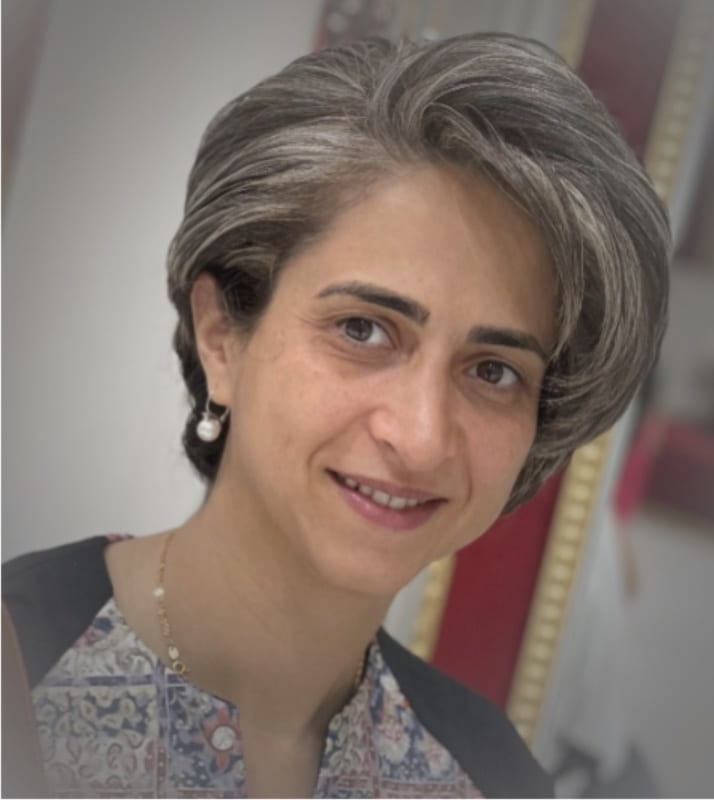
Data analytics for Warehousing Transportation Analysis
Fatemeh Ranaiefar
Senior Associate
Fehr & Peers
Abstract: “Demand for warehouse space is hitting record highs, and that doesn’t appear to be abating anytime soon. Demand is up 22% year-over-year in 2021. Logistics and parcel delivery is driving this growth. The 1,800 individual future tenants that participated in a study need over 600 million square feet of space” [9th annual Industrial Tenant Demand Study, published by JLL Industrial]. While all these facilities are called “industrial warehouses”, they can be very different in terms of their hours of operation, volume/type/length of truck trips generated, level of employment and impacts on the local transportation network. In recent years vacant lands and closed department store buildings in urbanized areas have been transformed into sorting facilities, last mile delivery, or fulfillment centers. These are dynamic facilities, such that their traffic patterns can change drastically as they respond to demand and requirements of the supply chain. I will discuss how we used Big Data to review the traffic patterns of a sample of these warehouses across United States from rural areas to dense urban cores, both pre and post Covid 19 Pandemic and discuss the following questions:
- What is the transportation typography of warehouses (trip generation, trip length distribution, peak and off-peak operation)?
- How Big Data can support transportation planning for cities hosting major warehousing operation? What are the gaps in the data?
- How warehousing uses can be accounted in transportation demand and forecasting?
- What does growth and changes in warehousing operation mean for roadway design and maintenance, multimodal planning and safety, and access for trucks
Bio: Ms. Fatemeh Ranaiefar joined Fehr & Peers after her PhD. graduation from University of California, Irvine in 2013. She specialized in freight transportation modeling, developing performance measures, and developing decision support tools for prioritizing projects to address freight issues. Even though “models” are great tools but observed freight data is a gem can tell the real story so much better! In recent years Fatemeh focused on using commercial fleet GPS probe data and other available public or crowd source freight data to describe the needs and impacts of freight transportation systems. Preparing meaningful statistics, understanding the limitations of the data, who is over/underrepresented in the samples or surveys and how trends are changing over time are important details that helps developing more practical and successful solutions. She has provided several training workshops for public agencies’ empowering staff to understand the freight data analytics, develop and evaluate freight forecasting scenario alternatives and assess projects and strategies under these scenarios based on comprehensive freight performance measures. Her recent major projects are California Freight Mobility Plan (CFMP 2020), California Statewide Freight Forecasting Model (CSFFM) development, SCAG Heavy Duty Truck Model Update, Utah Statewide Freight Model update, Virginia State Truck Parking Study, SANDAG Gateway study, impacts and opportunities of freight for SCAG communities and NCHRP 20-102(22) State and Local Impacts of Automated Freight Transportation Systems. She is passionate about research community and developing next generation of transportation enthusiasts. She serves on TRB Urban Freight and Freight Transportation Planning and Logistics committees. She teaches transportation modeling to Master students at USC and guide students on their dissertation.
This seminar took place on February 18, 2022.
View the “Data analytics for Warehousing Transportation Analysis” Webinar

Not Your Father’s Heavy-Duty Trucks: Electric trucks as a substitute for new road infrastructure
Jean-Daniel Saphores
Professor
Department of Civil and Environmental Engineering
University of California Irvine
Abstract: Electrification of trucking combined with connected and automated technologies promise to cut the cost of freight transportation, reduce its environmental footprint, and make roads safer. If electric trucks are powerful enough to cease behaving as moving bottlenecks, they could also increase the capacity of existing roads and reduce the demand for new road infrastructure, a consequence that has so far been understudied. To explore the potential traffic impacts of replacing conventional heavy-duty drayage trucks with electric and/or connected trucks, we performed microscopic traffic simulations on a network centered on I-710, the country’s most important economic artery, between the San Pedro Bay Ports and downtown Los Angeles, in Southern California. In addition to a 2012 baseline, we analyzed twelve scenarios for the year 2035 characterized by three levels of road improvements and four types of heavy-duty port trucks (HDPT). Our results show that 1,000 hp electric/hydrogen trucks (eTs) can be a substitute for additional road capacity in busy freight corridors. While CACC-connected conventional HDPTs would only slightly increase network speeds, replacing conventional HDPTs with eTs and improving selected I-710 ramps should be sufficient to absorb the forecast increases in drayage demand for 2035 without adding a controversial lane to I-710. Our results highlight the importance of accounting for the traffic impacts of new vehicle technologies in infrastructure planning and suggest shifting funding from building new capacity to financing 1,000 hp electric connected trucks in freight corridors until the market for these vehicles has matured.
Bio: Jean-Daniel Saphores is a Professor in Civil and Environmental Engineering at the University of California Irvine, and a core member of the Institute of Transportation Studies. He earned a PhD in Environmental and Natural Resource Economics, an MS in Environmental Systems Engineering, and an MA in Economics, from Cornell University. He focuses on transportation and environmental systems, which he analyzes using statistical and economic methods, combined with simulation and optimization tools. His active research interests include transportation and the environment (especially as it relates to air pollution and energy use), travel behavior analysis, alternative fuel vehicles, automated vehicles, transit use, sustainable infrastructure management, as well as decision making under uncertainty using real options.
This seminar took place on January 28, 2022.

Paradigm Shift Towards Smart and Healthy Cities – Systems Innovation at the Nexus of Transportation, Environment, and Public Health
H. Oliver Gao
Professor
Director, Center for Transportation, Environment and Community Health (CTECH)
Cornell University
Abstract: Transportation-related air pollution, GHG emissions and energy problems are a significant issue in the U.S. and across the world. The World Health Organization estimates that urban air pollution causes 200,000 deaths per year worldwide. How do we meet the mobility needs in urban transitions without sacrificing environment sustainability and global health? In this talk Dr. Gao takes a systems approach to study the nexus of transportation and environment/health systems. We’ll examine the broad spectrum and necessary depth of models, tools, and insights for trans-disciplinary systems research in support of integrative transportation, environment, and health systems planning and finance/policy innovation such as public private partnership.
Bio: Dr. Gao, Director of the Center for Transportation, Environment, and Community Health (CTECH), is a Professor with the School of Civil and Environmental Engineering at Cornell University. Gao is an international leading expert in urban infrastructure systems research and policy innovation for healthy living in sustainable communities. His research focuses on modeling and development of systems solutions for sustainable and intelligent infrastructure systems, low carbon and low emission transportation systems, and human-centered design for environment and public health. Before joining Cornell, Gao was a QUANT in the mathematical and econometrical modeling division at the Rohatyn Group, LLG, a Wall Street hedge fund specializing in emerging markets including the BRIC countries.
This seminar took place on September 24, 2021.

Prediction/Causality Tradeoffs and Data Size Issues in Transportation Modeling: The Example of Highway-Safety Analysis
Fred Mannering
Associate Dean for Research, College of Engineering
Professor of Civil and Environmental Engineering
University of South Florida
Abstract: The analysis of transportation data is largely dominated by traditional statistical methods (standard regression-based approaches), advanced statistical methods (such as models that account for unobserved heterogeneity), and data-driven methods (machine learning, neural networks, and so on). In the analysis of highway safety data, these methods have been applied mostly using data from observed crashes, but this can create a problem in uncovering causality since individuals that are inherently riskier than the population as a whole may be over-represented in the data. In addition, when and where individuals choose to drive could affect data analyses that use real-time data since the population of observed drivers could change over time. This issue, the size of the data (which can often influence the analysis method), and the implementation target of the analysis imply that analysts must often tradeoff the predictive capability (dominated by data-driven methods) and the ability to uncover the underlying causal nature of crash-contributing factors (dominated by statistical and econometric methods). However, the selection of the data-analysis method is often made without full consideration of this tradeoff, even though there are potentially important implications for the development of safety countermeasures and policies. This talk provides a discussion of the issues involved in this tradeoff with regard to specific methodological alternatives, and presents researchers with a better understanding of the trade-offs often being inherently made in their analysis.
Bio: Fred Mannering is currently the Associate Dean for Research in the College of Engineering and a Professor of Civil and Environmental Engineering (with a courtesy appointment in Economics) at the University of South Florida. He received his undergraduate degree from the University of Saskatchewan, masters from Purdue University, and doctorate from the Massachusetts Institute of Technology. He was previously a professor at Penn State, A professor and Department Chair at the University of Washington, and School Head and Chaired professor at Purdue University. His research interests are in the application of econometric and statistical methods to the analysis of highway safety, transportation economics, vehicle demand, travel behavior and a variety of other engineering-related problems. He has published extensively with over 150 journal articles and two books: Principles of Highway Engineering and Traffic 001Analysis (now in its seventh edition) and Statistical and Econometric Methods for Transportation Data Analysis (now in its third edition). His body of work has been cited over 13,000 in Scopus, over 10,000 times in the Web of Science Core Collection, and over 25,000 times in Google Scholar. Dr. Mannering is currently Editor-in-Chief (and founding Editor) of the Elsevier Science journal Analytic Methods in Accident Research and previous Editor-in-Chief (2003-2012) and current Distinguished Editorial Board Member of the Elsevier Science journal Transportation Research Part B – Methodological. He is also the Interim Executive Director of the Center for Urban Transportation Research (CUTR) at the University of South Florida and an Associate Director of the TOMNET University Transportation Center.
This seminar took place on May 21, 2021.
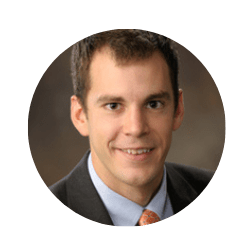
Traffic Flow Smoothing At Scale
Daniel B. Work
Associate Professor
Civil and Environmental Engineering
Electrical Engineering and Computer Science
Institute for Software Integrated Systems
Vanderbilt University
Abstract: The majority of the best-selling cars in the US are now available with SAE level-one automated driving features such as adaptive cruise control. As the penetration rate of these vehicles grows on the roadways, it is now possible to consider controlling the bulk human-piloted traffic flow by carefully designing these driver-assist features. This talk will discuss modeling, simulation, and field demonstration advancements that are needed to control automated vehicles to stabilize traffic flow at scale. Prior work on a closed course established that automated vehicles can eliminate human-generated phantom traffic jams that seemingly occur without cause, reducing fuel consumption by up to 40%. The talk will highlight the research challenges and progress towards demonstrating traffic flow smoothing with a fleet of connected and automated vehicles on the I-24 Smart Corridor in Tennessee, as part of the CIRCLES Consortium.
Bio: Dan Work is an associate professor in the Department of Civil and Environmental Engineering, the Department of Electrical Engineering and Computer Science, and the Institute for Software Integrated Systems at Vanderbilt University. He has held research appointments at the University of Illinois at Urbana-Champaign (2010–17), Institute for Pure and Applied Mathematics (2015, 2020), Microsoft Research Redmond (2009), and Nokia Research Center Palo Alto (2007–09). His research on automated vehicles has appeared in numerous media outlets including ABC’s Good Morning America, Reuters, Wired, and MIT Technology Review. Prof. Work was named a 2018 Gilbreth Lecturer by the National Academy of Engineering, and a CAREER Award recipient from the National Science Foundation in 2014.
This seminar took place on May 7, 2021.

Deployable Decentralized Routing Strategies using Envy-Free Incentive Mechanisms for Connected and Autonomous Vehicle Environments
Srinivas Peeta
Frederick R. Dickerson Chair and Professor
School of Civil and Environmental Engineering
H. Milton Stewart School of Industrial and Systems Engineering
Georgia Institute of Technology
Abstract: Routing strategies using dynamic traffic assignment have been proposed in the literature to optimize system performance. However, challenges have persisted in their deployability and effectiveness due to inherent strong assumptions on traveler behavior and availability of network-level real-time traffic information, and the high computational burden associated with computing network-wide flows in real-time. To address these gaps, this study proposes an incentive-based decentralized routing strategy to nudge the network performance closer to the system optimum in a traffic system with connected and autonomous vehicles (CAVs). The strategy consists of three stages. The first stage incorporates a local route switching dynamical system to approximate the system optimal route flow in a local area based on vehicles’ knowledge of local traffic information. This system is decentralized in the sense that it only updates the local route choices of vehicles in this area to circumvent the high computational burden associated with computing the flows on the entire network. The second stage optimizes the route for each CAV by considering individual heterogeneity in traveler preferences (e.g., the value of time) to maximize the utilities of all travelers in the local area. Constraints are also incorporated to ensure that these routes can achieve the approximated local system optimal flow of the first stage. The third stage leverages an expected envy-free incentive mechanism to ensure that travelers in the local area can accept the optimal routes determined in the second stage. They prove that the incentive mechanism is expected individual-rational and budget-balanced. The study analytically shows that the proposed incentive-based decentralized routing strategy can enhance network performance and user satisfaction in a connected and autonomous traffic environment.
Bio: Srinivas Peeta is the Frederick R. Dickerson Chair and Professor in the School of Civil and Environmental Engineering and the H. Milton Stewart School of Industrial and Systems Engineering at Georgia Institute of Technology. He is also Principal Research Faculty at the Georgia Tech Research Institute. Previously, he was the Jack and Kay Hockema Professor at Purdue University and the Director of the NEXTRANS Center, formerly the U.S. Department of Transportation’s (USDOT’s) Federal Region 5 University Transportation Center. He was also the Associate Director of USDOT’s Center for Connected and Automated Transportation (CCAT). He received his B.Tech., M.S. and Ph.D. degrees from the Indian Institute of Technology (Madras), Caltech and The University of Texas at Austin, respectively. Dr. Peeta’s research interests are multidisciplinary, and broadly span transportation and infrastructure systems.
This seminar took place on April 30, 2021.

The Various Silver Linings of the Impacts of the Pandemic on Traffic
Fraser Shilling
Co-Director, Road Ecology Center
University of California, Davis
Abstract: In US states, mitigation of the spread of COVID-19 has been implemented by cities, counties, and governors’ offices through “shelter-in-place” and “stay-at-home” orders and related actions. The Road Ecology Center carried out three primary types of investigation into the traffic reduction that resulted from these orders and the corresponding “silver linings” that emerged for driver safety, climate change, and nature.
Traffic Safety: Using observations of reported traffic incidents in our real-time “California Highway Incident Processing System” (CHIPS), the Road Ecology Center found a ~50% reduction in injury and non-injury crashes, on state highways and rural roads that resulted from Governor Newsom’s “shelter in place” order, from ~1,000 crashes and ~400 injury/fatal crashes per day to 500 and 200 per day, respectively. These reductions have resulted in a savings to the public of about $40 million/day, or $1 billion since the order went into effect.
Climate Change: In the US, transportation, including personal vehicles, releases about 29% of the greenhouse gas (GHG) per year. We found that estimated emissions had declined by >50% following the various government stay-at-home orders. This puts the US on track to meet its annual goals for GHG reduction under the Paris Climate Accord.
Impacts to High traffic volume is a primary contributor to wildlife-vehicle conflict (WVC) and wildlife mortality on roads. Using traffic and collision data from four US states (California, Idaho, Maine, and Washington), we found a 34% reduction in WVC. This reduction in mortality would potentially equate to 10s of millions fewer vertebrates killed on US roadways during one month of traffic reduction, representing an unintentional conservation action unprecedented in modern times.
Bio: Fraser received his Ph.D. from USC and has three main project areas in transportation ecology: 1) finding out how environmental disruptions (e.g., climate change, pandemics) impact transportation and other systems, 2) studying how traffic noise and light impacts wildlife use of habitat and wildlife crossing structures, and 3) studying the interaction of transportation systems with natural processes. He is the lead organizer for the International Conference on Ecology and Transportation (ICOET) and co-organizer of the Global Congress on Linear Infrastructure and the Environment (inaugural congress in 2021).
This seminar took place on April 16, 2021.
View “The Various Silver Linings of the Impacts of the Pandemic on Traffic” Webinar

Dynamic Driving and Routing Games for Autonomous Vehicles on Networks: A Mean Field Game Approach
Xuan (Sharon) Di
Associate Professor
Department of Civil Engineering and Engineering Mechanics, Smart Cities Center, Data Science Institute
Columbia University in the City of New York
Abstract: As this era’s biggest game-changer, autonomous vehicles (AV) are expected to exhibit new driving and travel behaviors, thanks to their sensing, communication, and computational capabilities. However, a majority of studies assume AVs are essentially human drivers but react faster, “see” farther, and “know” the road environment better. We believe AVs’ most disruptive characteristic lies in its intelligent goal-seeking and adapting behavior. Building on this understanding, we propose a dynamic game-based control leveraging the notion of mean-field games (MFG). Prof. Di will first introduce how MFG can be applied to the decision-making process of a large number of AVs. To illustrate the potential advantage that AVs may bring to stabilize traffic, she will then introduce a multi-class game where AVs are modeled as intelligent game-players and HVs are modeled using a classical non-equilibrium traffic flow model. Last but not the least, she will talk about how the MFG-based control is generalized to road networks, in which the optimal controls of both velocity and route choice need to be solved for AVs, by resorting to nonlinear complementarity problems.
Bio: Xuan (Sharon) Di is an Associate Professor in the Department of Civil Engineering and Engineering Mechanics at Columbia University in the City of New York since September 2016 and serves on a committee for the Smart Cities Center in the Data Science Institute. Prior to joining Columbia, she was a Postdoctoral Research Fellow at the University of Michigan Transportation Research Institute (UMTRI). She received her Ph.D. degree from the Department of Civil, Environmental, and Geo-Engineering at the University of Minnesota, Twin Cities in 2014. Details about DitecT Lab and Prof. Sharon Di’s research can be found in the following link: https://sharondi-columbia.wixsite.com/ditectlab
This seminar took place on April 9, 2021.

An Electric Future for Transportation
Regan Zane
David G. and Diann L. Sant Endowed Professor
Director, NSF ASPIRE ERC
Utah State University
Abstract: Electric vehicles (EVs) offer tremendous opportunity to both reduce the emissions and stabilize and reduce the cost of transportation. However, significant challenges remain, particularly in charging infrastructure. Now is the time, as our nation considers major investments in aging infrastructure, to build for a future designed to support widespread electrification of all vehicle classes. This talk will introduce the ASPIRE ERC and our mission to improve health and quality of life by catalyzing sustainable and equitable electrification in transportation.
Bio: Dr. Regan Zane is Center Director of the NSF Engineering Research Center for Advancing Sustainability through Powered Infrastructure for Roadway Electrification (ASPIRE). He holds the David G. and Diann L. Sant Endowed Professor position at Utah State University in the Department of Electrical and Computer Engineering, where he founded the USU Power Electronics Lab (UPEL), the Electric Vehicle and Roadway (EVR) research facility and test track, and the Battery Limits and Survivability Test (BLAST) lab. He has published approximately 200 peer-reviewed articles, has 28 issued patents, has received international and institutional recognition in research, teaching and innovation, and has raised more than $60 million in research funding to date. His recent research programs span electrified transportation charging systems and infrastructure, from battery, vehicle, and charging systems to grid integration, smart charge management, demand response and distributed energy resources. His programs maintain a strong emphasis on collaboration with academic, government and industry partners to develop and transition innovative technologies into the marketplace.
This seminar took place on April 6, 2021.

Cross Border Transportation and Environmental/Health Issues
Dr. Henry Van
Visiting Professor of Civil Engineering
The University of Texas at El Paso
Abstract: In this presentation, Dr. Henry Van discussed Cross Border Transportation and Environmental/Health Issues in the El Paso/Juarez Metroplex area, focusing on multifaceted, complex challenges involving very congested traffic with long wait times going from Mexico to the U.S. or vice versa. The border crossing in the El Paso/Juarez area is the same as the other major border crossings in Nogales, San Diego, and Matamoros. Critical transportation problems cause significant financial losses to major manufacturers operating in Mexico transporting products bound for the United States. Commercial and automobile traffic congestion also causes air pollution at the crossings which has become a significant health issue for people living adjacent to these border crossings.
Bio: Dr. Van has over 30 years’ experience developing and implementing environmental, health and safety (EHS) strategies as an executive for several domestic and multinational energy, consulting firms, and manufacturing companies. He has worked in 30 countries with Georgia Tech, and major oil/gas, electricity, and manufacturing companies. He has also been involved in studying environmental issues along the El Paso/Juarez international border involving Rio Grande water quality studies, and air pollution impacts. He began to work on border environmental issues in 1980 in the El Paso/Juarez Metroplex area. He managed all transportation and environmental, health and safety issues for a U.S. global medical company in Juarez for seven years. Dr. Van holds a Bachelor of Science in Environmental Microbiology from The University of Texas at El Paso, a Master’s and Ph.D. in Environmental Science in Engineering from the University of Oklahoma. He is trilingual in English, Spanish, and Portuguese.
This seminar took place on February 24, 2021.
View the “Cross Border Transportation and Environmental/Health Issues” Webinar
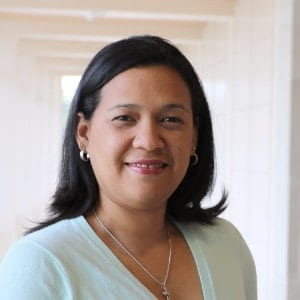
Building Trust to Enhance Preparedness: An Analysis of Community Perceptions
Johanna Amaya Leal
Department of Supply Chain Management
Iowa State University Ivy College of Business
Abstract: Even though communities are considered a critical responder after disasters, the subject of community perceptions and trust in response agencies have not received much attention in preparedness research. This study seeks to fill this gap by analyzing how the attitudes and perceptions of individuals in potentially disaster-impacted communities, as well as their socio-economic characteristics, can affect both the roles of trust in emergency response agencies, and risk perception in disaster preparedness.
Usually, organizations developing the necessary preparedness and response plans do not have a clear idea of citizens’ perceptions of the response system, and how these perceptions will/can influence their level of preparedness. Knowing such perceptions would allow communities to engage in the decision of what they need instead of being passive receptors of what is sent to them in case of extreme events. This interaction will positively impact the practice community and will support their effort in building local capacity.
A structural equation modeling approach is used to analyze data from a survey applied to individuals located in towns affected by two different disasters in Colombia. The results suggest that trust in response agencies is mostly influenced by previous experience in disaster situations, education, and income. However, while females have a higher risk perception, they prepare less, even after testing for mediation. Interestingly, for two individuals with the same level of education, the one with a higher income trusts more in the response system. In the same context, for two individuals with the same level of income, the one with higher education trusts less. The seminar will close with a set of recommendations for response agencies, recommendations that take into account the perceptions of the different segments of the population to be served, so that the effectiveness of preparedness efforts and overall level of preparedness of the community increases.
Bio: Dr. Amaya is an Assistant Professor in the Department of Supply Chain Management at Iowa State University Ivy College of Business. She received her B.Sc. in Industrial Engineering from Universidad del Norte, Colombia. She got a M.Sc. in Industrial and Systems Engineering, from University of Florida and completed her PhD. in Transportation Engineering at Rensselaer Polytechnic Institute (RPI). Ms. Amaya is the recipient of multiple awards, including the 2017 POMS Emerging Scholar and 2015 RPI Founders Award of Excellence. She is an Eno Fellow (2015), a FOCUS Fellow from Georgia Tech (2016), an MIT Rising Star (2015), and a Fulbright Scholar (2008). Her research interests are disaster response logistics and sustainable urban freight transportation. In the area of disaster response, she conducts fieldwork research to understand the complexity of disaster environments and the requirements impacted supply chains need to respond. She uses mathematical programming to model relief distribution while minimizing the social costs of the operations and econometric modeling to identify attributes and perceptions of individuals in disaster impacted areas. In sustainable urban freight transportation, Dr. Amaya analyzes the impacts of initiatives developed to address the issues generated by freight activity in urban areas. She works with other researchers in the field as she is an Associate Research Partner of the VREF Center of Excellence for Sustainable Urban Freight Systems. She has been part of multiple projects and panels funded by the National Science Foundation, USAID, the National Cooperative Highway Research Program (NCHRP), and the USDOT.
This seminar took place on May 15th, 2020.
View the “Building Trust to Enhance Preparedness: An Analysis of Community Perceptions” Webinar

California and the State of Freight
Avital Barnea
Deputy Secretary for Transportation Planning
California State Transportation Agency
Abstract: The freight transportation system is a complex network that carries everything from cars to petroleum to bananas and more. On ships, airplanes, trains, trucks, and bicycles, cargo often moves across multiple modes before it reaches its final destination. In addition, the rise of e-commerce, trade tariffs, and even COVID-19 are rapidly reshaping the freight industry. This presentation will provide an overview of current freight trends and discussion of California’s role in the national and international freight sector.
Bio: Avital Barnea was appointed Deputy Secretary for Transportation Planning at the California State Transportation Agency (CalSTA) by Governor Gavin Newsom in July 2019. At CalSTA, Avital serves in a key advisory role to the Secretary on transportation planning including sustainability programs, mass transit, rail, ports, and freight for the state.
Prior to her appointment, Avital most recently served as Program Manager for Freight at the American Association of State Highway and Transportation Officials (AASHTO), a nonprofit, nonpartisan association representing transportation departments in the 50 states, the District of Columbia, and Puerto Rico. Before joining AASHTO, Avital worked as a Policy Analyst & Grants Manager in the Office of the Secretary at the US Department of Transportation and as a Community Planner with the Federal Transit Administration, first joining the federal workforce as a Presidential Management Fellow (PMF). On behalf of the PMF program, she also served on Capitol Hill in the US Senate Committee on Finance, where she worked on and witnessed the passage of MAP-21. Avital began her career in transportation working in bus operations for Metro Transit in Minneapolis.
Avital holds a Master of Urban and Regional Planning degree from the Hubert H. Humphrey School of Public Affairs at the University of Minnesota and a Bachelor of Arts degree in Geography from the University of Minnesota.
This seminar took place on May 8th, 2020.

Smart Cities and Public Health
Miroslav Svítek
Professor, Faculty of Transportation Sciences
Czech Technical University
Abstract: In this presentation, the speaker introduced the concept of smart cities. He shared his experience on several projects in Europe, Asia, and South America that use the smart cities implementation to promote smart healthcare. He also discussed how technologies such as data analytics, smart sensors, wearable devices, connected and automated ambulances, virtual doctors, smart hospital rooms, etc. are being applied to crisis management, clusters identification, contact tracing, transportation of patients, automated testing, diagnosis and monitoring of patients and citizens on quarantine during a pandemic.
Bio: Prof. Dr. Ing. Miroslav Svítek, dr.h.c. received his Ph.D. in Radioelectronic at Faculty of Electrical Engineering, Czech Technical University in Prague in 1996. He is currently a full professor in engineering informatics at Faculty of Transportation Sciences, Czech Technical University in Prague. His teaching and research expertise are in the areas of theoretical telematics, intelligent transport systems, smart cities, quantum system theory and quantum informatics. He is author or co-author of more than 250 scientific papers and 10 monographs. Miroslav Svítek is the President of Association of Transport Telematics of the Czech and Slovak Republic, President of National Association for Electromobility, President of the Czech Smart Cities Cluster, and Member of the Engineering Academy of the Czech Republic.
This seminar took place on April 24th, 2020.

Considering Technology and Resilience in the Florida Transportation Plan
Jim Halley, A.A.E., ACE
Florida Department of Transportation
Office of Policy Planning
Statewide Planning Coordinator
Abstract: Technology is constantly evolving and changing the way people interact with one another, work, do business, travel, and even how they buy groceries. New and emerging technologies offer the potential for a safer, more efficient transportation system; more connectivity globally and locally; and streamlined business practices. However, increased reliance on technology brings other challenges to the forefront like cybersecurity and data privacy. Transportation partners need to make wise decisions today to prepare for this future.
Natural hazards, cyberattacks, and other events can have significant and unexpected impacts on Florida. Simultaneously, trends such as sea level rise and global economic shifts can lead to progressive challenges. These events and trends can result in unanticipated transportation system disruptions and increasing constraints on infrastructure, impeding access to reliable mobility. The impact on the lives of residents and visitors and the flow of business and trade can be extensive. It is critical to prepare Florida’s transportation system to be adaptive in the face of these events and trends. Planning for resilience leverages our understanding of potential hazards to mitigate risk, make wiser investment decisions, and provide more reliable transportation.
Bio: Jim Halley graduated from the Florida Institute of Technology with a bachelor’s degree in Aviation Management in 2003 and from Embry-Riddle Aeronautical University with an M.B.A. in Aviation in 2014. After spending time as an active duty Marine Corps Officer upon graduating from Florida Tech, Mr. Halley worked as an airport planner with the Lee County Port Authority/Southwest Florida International Airport. Jim has since worked for two aviation consulting firms – Talbert and Bright in NC and Kimley-Horn in FL – as well as multiple airports within Florida. Jim has served as the Florida Department of Transportation’s (FDOT) Aviation System Development Manager for the majority of the past 4 ½ years where he managed FDOT’s public-use aviation system program, the Continuing Florida Aviation System Planning Process, and FDOT’s airport sustainability efforts. Jim recently transitioned into a new role with the department as the Statewide Planning Coordinator for the FDOT Office of Policy Planning where he will manage tasks related to the Florida Transportation Plan update and lead public and partner outreach and Policy Planning’s Automated, Connected, Electric, and Shared (ACES) Vehicles efforts. Jim served 8 years as a U.S. Marine special operations team leader and artillery officer and has nearly 12 years of experience in airport operations, planning, development, and management. Jim is an Accredited Airport Executive and Airport Certified Employee, both through the American Association of Airport Executives, a licensed skydiver through the U.S. Parachute Association, and was named to Airport Business Magazine’s “Top 40 under 40 Aviation Professionals” in 2017.
This seminar took place on April 10th, 2020.
View the “Considering Technology and Resilience in the Florida Transportation Plan” Webinar

The Evolving Freight Demand
Xiaokun (Cara) Wang
Associate Professor
Civil and Environmental Engineering
Rensselaer Polytechnic Institute
Abstract: This presentation talked about the impacts of technologies on freight agent behavior and demand pattern in the near future. The presentation will discuss the special features of the new freight demand, and how to get prepared for these new trends from the perspectives of data acquisition, modeling, and policy making.
Dr. Cara Wang got her B.S and M. S. degrees from Tsinghua University, China, and Ph.D. from the University of Texas at Austin. Her research mainly focuses on the analysis of the interactions between land use, transport (both passenger and freight), energy and environment, and the spatial dependence of travel behavior. She has published over 60 papers in peer-reviewed journals and conference proceedings. She is a recipient of the Pikarsky Award for Outstanding Ph.D. Dissertation, and INFORMS Franz Edelman Award. Dr. Wang is member of TRB Committee ABJ70 (Artificial Intelligence and Advanced Computing Applications) and AT015 (Freight Transportation Planning and Logistics). Dr. Wang has been PI and Co-PI of research projects sponsored by National Science Foundation (NSF), National Cooperative Highway Research Program (NCHRP), National Cooperative Freight Research Program (NCFRP), New York State Energy Research and Development Authority (NYSERDA), U.S. State Department of Transportation, among others.
This seminar took place on March 27, 2020.

Vision Zero in San Francisco: Advancing Public Health and Equity
Megan L. Wier
Director, Program on Health, Equity & Sustainability
Co-Chair, San Francisco Vision Zero Task Force
Environmental Health Branch, Population Health Division
San Francisco Department of Public Health
Abstract: This presentation provided an overview of San Francisco’s Vision Zero policy to eliminate traffic deaths and reduce severe injuries on City Streets. Six years in to San Francisco’s Vision Zero commitment, this presentation will provide insights into what it will take to eliminate traffic deaths, the critical need to elevate equity in traffic safety initiatives, and the key role of public health data and evidence.
Bio: Megan Wier, MPH is Director of the Program on Health, Equity and Sustainability (PHES) in the Environmental Health Branch at SFDPH, where she and her team work with local communities and government agencies to develop and apply innovative approaches to using health data and evidence to inform safe, sustainable and equitable transportation and land use planning decisions in San Francisco. Ms. Wier co-chairs the San Francisco Citywide Vision Zero Task Force to eliminate traffic deaths, and oversees comprehensive, collaborative data systems in support of evaluation, surveillance, monitoring and analysis of San Francisco’s data-driven, evidence-based transportation injury prevention initiatives. Ms. Wier has an MPH in Epidemiology and Biostatistics from UC Berkeley, and a BA in Sociology and Women’s Studies from the University of Michigan.
This seminar took place on February 14, 2020.
View the “Vision Zero in San Francisco: Advancing Public Health and Equity” Webinar

Population-based strategies to improve driving safety
Linda Hill
Professor
Department of Family Medicine and Public Health
UC San Diego
Abstract: Driving behaviors and driving safety involve complex interactions between the driver, their vehicle and the environment. Driving behaviors account for approximately 95% of crashes, but interventions to reduce known risks often don’t reach the target audience. The presenter will discuss strategies employed by the UC San Diego Center for Human and Urban Mobility to improve driving safety.
Bio: Dr. Hill, MD, MPH is a Professor in the Department of Family Medicine and Public Health at UCSD. She is Director of the UCSD/SDSU General Preventive Medicine Residency, and Senior Staff Physician at San Diego Family Care. She is the Director of the UCSD Training, Research and Education for Driving Safety (treds.ucsd.edu), and the Center for Human and Urban Mobility (http://urbanhuman.ucsd.edu), and directs the AAA Foundation for Traffic Safety LongROAD study (San Diego site)(aaa longroad). Her driving safety work is greatly enhanced by the collaborative efforts with colleagues at UCSD, with expertise in robotics, computer science, neuroscience and engineering.
This seminar took place on February 7, 2020.
View the “Population-based strategies to improve driving safety” Webinar
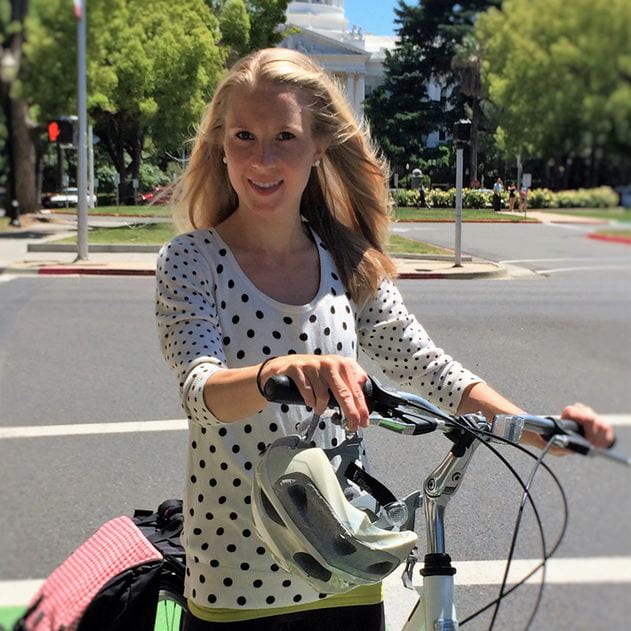
Caltrans’ Pedestrian and Bicyclist Safety Program
Rachel Carpenter
Pedestrian and Bicycle Safety Branch Chief
California Department of Transportation
Abstract: As recommended by California’s Strategic Highway Safety Plan (SHSP), Caltrans is working to develop a pedestrian and bicyclist safety improvement program. This presentation by Rachel Carpenter provided an overview of what has been completed since the program’s inception in 2016 as well as next steps. Specifics behind the below listed efforts were shared.
- the 2016 (Pilot) Pedestrian Collision Monitoring Program,
- the 2018 (Pilot) Bicyclist Collision Monitoring Program,
- the 2020 Pedestrian Collision Monitoring Program,
- pedestrian and bicyclist safety training, and
- modifications to California Manual on Uniform Traffic Control Devices (CA MUTCD) related to pedestrian and bicyclist safety and operations.
Bio: Rachel is the Pedestrian and Bicycle Safety Branch Chief with the California Department of Transportation’s (Caltrans) Division of Traffic Operations. She is responsible for setting the direction and priorities in the establishment of both bicyclist and pedestrian safety improvement programs. Rachel is a member of the TRB’s Standing Committee on Bicycle Transportation. She joined Caltrans in 2014 after leaving the San Francisco Municipal Transportation Agency’s (SFMTA) Livable Streets Subdivision. While with the SFMTA, she worked as a project manager and design engineer for multiple bicycle facility, pedestrian safety and traffic calming projects. Prior to joining the SFMTA, Rachel worked as a Graduate Student Researcher with the UC Davis Institute of Transportation Studies. She holds both Bachelor of Science and Master of Science degrees in Civil Engineering, and is a licensed Professional Civil Engineer in California. Rachel spent four years volunteering as a City of Lafayette Circulation Commission Member, and currently volunteers as a City of Sacramento Active Transportation Commission Member.
This seminar took place on November 22, 2019.
View the “Caltrans’ Pedestrian and Bicyclist Safety Program” Webinar

Safety in Numbers for pedestrians and bicyclists: Implications for public policy
Peter Jacobsen
Professional Engineer
Abstract: That motorists are a lot less likely to hit someone walking or bicycling if more people walk or bicycle surprised researchers. In contrast, the number of car crashes increases proportionally with the number of cars. The evidence of a prevalence effect implies that injury risk is more than just a matter of physics, and that something occurs with human physiology or psychology. Safety in Numbers likely occurs because humans have difficulty detecting rare items. That injury risk decreases with more walking and biking creates opportunity for implementing public policies for reducing damage to the climate and improving health. This non-linear risk also explains why the recent NTSB recommendation for compulsory bicycle helmet laws could increase injury risk.
Bio: Peter Jacobsen is a professional engineer with a strong interest in the health impacts of transportation policy. His published work ranges from injury prevention to activity promotion. His published article in ITE Journal explains to traffic engineers why the physiology of young children prevents them from coping with the dangers of traffic and why engineers need to adapt residential streets to the needs of children. His influential study, Safety in Numbers, showed that the risk of a motorist hitting a pedestrian or a bicyclist decreases as more people walk or bicycle, and hence the health goals of injury prevention and activity promotion can work together to improve health. A subsequent study showed that this lower risk is likely due to human limitations in detecting rare objects. He is currently bringing state-of-the-art roadway engineering to improve health by encouraging physical activity and reducing severe injuries.
This seminar took place on November 15, 2019.
View the “Safety in Numbers for pedestrians and bicyclists: Implications for public policy” Webinar
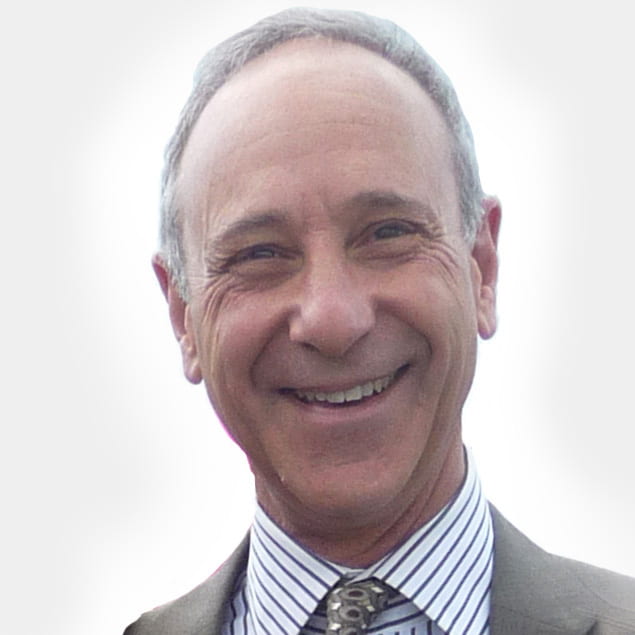
Health Co-benefits of Active Transportation for Greenhouse Gas Mitigation
Neil Maizlish
Visiting Researcher
Department of Human Ecology
UC Davis
Abstract: Background: The Integrated Transport and Health Impacts Model (ITHIM) is a scenario-based risk assessment tool that quantifies the health benefits and harms of physically active travel (walking and cycling), road traffic injuries, and fine particulate air pollution in urban transportation systems.
Methods: Descriptive statistics on travel patterns, physical activity, traffic injuries, and car emissions were derived from statewide travel and health surveys, collision databases, and outputs from regional travel demand and emissions models. The change in disease burden was measured in deaths and disability adjusted life years (DALYs) based on dose–response relationships from meta-analyses and the distributions of physical activity and traffic injuries. Alternative scenarios were measured against baseline travel patterns experienced in each major California region. Alternative scenarios included increases in active travel from baseline to 20 median minutes/person/day, apportioned entirely to walking (“all walk”), cycling (“all cycle”), and or transit-related active travel (“all transit”). The health benefits and greenhouse mitigation of these scenarios were compared to those of the preferred scenarios regional transportation planning agencies. These agencies are mandated to demonstrate greenhouse gas reductions in their transportation plans (“Sustainable Communities Strategies (SB375)”, which emphasize transit expansion to achieve this goal.
Results:The preferred scenarios increased statewide active transport from 41 to 54 min/person/week, which was associated with an annual decrease of 890 deaths and 15,053 DALYs. The ambitious, maximal alternatives increased population mean travel duration to 283 min/person/week for walking, bicycling, or transit and were associated a reduction in deaths and DALYs from 2.5 to 10 times greater than the California preferred scenarios. The alternative with the largest health impact was bicycling, which led to 8,349 fewer annual deaths and 141,597 fewer DALYs, despite an increase in bicyclist injuries. With anticipated population growth by 2040, no alternative achieved decreased carbon emissions, but bicycling had the greatest potential for slowing their growth.
Conclusions: Expansion of transit confers important health benefits through active transport and meets important societal goals for destination accessibility. However, expansion of walking and cycling, independently of transit, can play a larger role in improving population health.
Bio: Neil Maizlish, PhD, MPH is an epidemiologist with over 30 years of experience in research methods, statistics, and health informatics in government, academia, unions, and health care organizations. He currently is a Visiting Researcher at the University of California, Davis, where he models the health co-benefits of active transport as a greenhouse gas mitigation strategy. He is also a senior Research Scientist at the Public Health Institute, focusing on the development of healthy community indicators.
This seminar took place on November 8, 2019.
View the “Health Co-benefits of Active Transportation for Greenhouse Gas Mitigation” Webinar

Heterogeneous traffic flow: how agent interactions shape collective properties
Jia Li
Research Assistant Professor
Texas Tech University
Abstract: Collective properties of traffic flow, such as its equilibrium, aggregate dynamics and stability, are determined by attributes of agents (i.e. drivers/vehicles) as well as how the agents interact. Understanding connections between the two is crucial to control and operations, e.g. towards designing mechanisms to make mixed traffic flow of autonomous and human-driven vehicles self-organize and self-stabilize. In this talk, Jia Li presented recent research in this direction. In the first part, Li provided an explicit characterization of equilibriums attainable by heterogeneous traffic flow in multilane settings, where one class of agents are “type-sensitive”, a property that autonomous vehicles may likely be endowed with. In the second part, Li presented simulation evidence along with a heuristic analysis towards explaining spontaneous platoon formation in heterogeneous traffic flow and the role of opportunistic agent behaviors. Finally, Li discussed implications of these results from a control perspective.
Bio: Jia Li is now a Research Assistant Professor at Texas Tech University. His research focuses on the intersection of traffic flow theory, transportation systems modeling, and connected and autonomous vehicles. He received Ph.D. from University of California, Davis in 2013, under the supervision of Professor Michael Zhang. Then he joined University of Texas at Austin and worked with NAE member, Professor Michael Walton. He published twenty peer-reviewed papers and contributed to a dozen of proposals that secured around two-million research funds. His current research is sponsored by a seed grant from Hurricane Resilience Institute and an internal grant from Texas Tech University.
This seminar took place on November 1, 2019.
View the “Heterogeneous traffic flow: how agent interactions shape collective properties” Webinar

Transforming Hillsborough County’s Transportation Future
Abstract: There are tremendous opportunities in Hillsborough County at this time. We can create a safe, sustainable transportation network and build the kind of vibrant, walkable places that bring opportunity, economic development, and support a higher quality of life for our residents. Commissioner Kemp is looking forward to joining other women leaders in transportation in Hillsborough County to have a conversation about how they can work together to accomplish these goals. She will be joined by Jean Duncan, P.E. Director of Transportation and Stormwater Services for the City of Tampa, Cassandra Borchers, AICP, Chief Development Officer of PSTA, and Beth Alden, AICP, Executive Director of Hillsborough County MPO.
Pat Kemp Bio: Patricia “Pat” Kemp was elected to the County Commission in 2016, representing Countywide District 6. Commissioner Kemp has more than three decades of public service in Hillsborough County. She was Chief Aide to Congresswoman Kathy Castor when Castor served on the Hillsborough County Commission. She has been an advocate for improving transportation in the county and the region. Cassandra Borchers is the Chief Development Officer of the Pinellas Suncoast Transit Authority (PSTA) in St. Petersburg, Florida. She manages the PSTA Planning Department, which includes strategic planning, long-range planning, grant development, community funding partnerships, capital project development, route development and scheduling, non-financial statistics and public engagement.
Jean Duncan Bio: Jean Duncan was appointed as the Director of the City of Tampa Transportation and Stormwater Services in August 2014. She oversees of the Capital Bridge and Seawall Program, Transportation Capital Improvement Program, Stormwater Capital Program, Traffic Management and Operations, and Stormwater Operations. Current initiatives include : Multimodal Projects and Smart City Initiatives.
Cassandra Borchers Bio: Cassandra Borchers is the Chief Development Officer of the Pinellas Suncoast Transit Authority (PSTA) in St. Petersburg, Florida. She manages the PSTA Planning Department, which includes strategic planning, long-range planning, grant development, community funding partnerships, capital project development, route development and scheduling, non-financial statistics and public engagement.
Beth Alden Bio: Beth Alden leads an award-winning team of planners with a vision of safe, inclusive mobility choices that promote respect and trust. She has spearheaded initiatives that empower residents to reshape their communities together, including the first multijurisdictional Vision Zero Action Plan in the country, and the first tri-county growth scenarios collaboration in this region, It’s Time Tampa Bay. As the architect of Hillsborough’s Imagine 2040 Transportation Plan, she combined performance metrics and creative public engagement to help local leaders refocus on essentials, laying the groundwork for a successful sales tax referendum in 2018.
This seminar took place on April 24, 2019.
View the “Transforming Hillsborough County’s Transportation Future” Webinar

The Equal Distribution of Freedom
Beth Alden
AICP, Executive Director
Hillsborough Metropolitan Planning Organization for Transportation
Tampa, Florida
Abstract: Nationally-renowned transit planner Jarrett Walker has said, “The discussion of equity in transportation … is at its best a study of the equal distribution of freedom.” Ms. Alden will discuss the intersection of access, public health, safety, and multimodal transportation investments in Tampa and Hillsborough County, reflecting on the use of tools such as scenario planning and performance-based programming to collaboratively reshape priorities in our community.
Bio: Beth Alden leads an award-winning team of planners with a vision of safe, inclusive mobility choices that promote respect and trust. She has spearheaded initiatives that empower residents to reshape their communities together, including the first multijurisdictional Vision Zero Action Plan in the country, and the first tri-county growth scenarios collaboration in this region, It’s Time Tampa Bay. As the architect of Hillsborough’s Imagine 2040 Transportation Plan, she combined performance metrics and creative public engagement to help local leaders refocus on essentials, laying the groundwork for a successful sales tax referendum in 2018. Appointed in 2017 to the National Academy of Sciences’ NCHRP 08-36 Panel for transportation planning research, she also chairs the Florida MPO Advisory Council’s Noteworthy Practices Committee, has served as a best-practice presenter in several Federal Highway Administration Peer Exchange programs and guidebook panels, and wrote portions of the American Institute of Certified Planners’ first exam to certify transportation planning specialists. Beth has worked in the public and private sectors as a professional planner since 1994, and holds a Master’s in Planning from the University of Minnesota and a Bachelor’s in Environmental Design & Architecture from North Carolina State University.
This seminar took place on March 28, 2019.

Where Matters: Health and Economic Impacts of Where We Live
Lawrence D. Frank, Ph.D., AICP, CIP, ASLA
Professor and Bombardier Chair in Sustainable Transportation and Health
University of British Columbia
President, Urban Design 4 Health, Inc.
Abstract: New evidence linking built and natural environment features with physical activity, obesity, diabetes, cardiovascular disease, stress, and sense of community will be presented. These finding are based on large scale health surveillance databases (40,000-50000 N) with address information spatially linked with detailed measures of regional transportation accessibility, walkability metrics, and green space. Results have been integrated into decision-support scenario planning tools (California and National Public Health Assessment Models) designed to predict health impacts of contrasting land use and transportation investment proposals at the neighborhood, corridor, and regional scale.
Bio: Dr. Frank specializes in the interaction between land use, travel behavior, air quality; and health; and in the energy use, and climate change impacts of urban form policies. He coined the term “walkability” in the early 90’s and his work led to WalkScore and has been cited over 27,000 times making him one of the two most cited planning academics in the world. Thompson and Reuters has listed him in the top 1% globally since 2014 as a highly cited researcher. Dr. Frank has published over 150 peer reviewed articles and co-authored two of the leading books: Heath and Community Design and Urban Sprawl and Public Health. Which helped to map out the field emerging at the nexus between built, natural, and social environments and health. Urban Design 4 Health builds software tools and collects data to measure and predict health, wellbeing, and fiscal impacts of transportation investment, natural environment, and land development actions.
This seminar took place on March 25, 2019.
View the “Where Matters: Health and Economic Impacts of Where We Live” Webinar

Multimodal Planning for SIS
Abstract: Florida’s Strategic Intermodal System (SIS) represents the state’s largest and most significant transportation facilities including airports, spaceports, seaports, rail corridors, passenger terminals, transit, waterways, and highways. The SIS serves as the primary avenue for implementing Florida’s long-range transportation vision and SIS facilities receive the highest priority for transportation capacity improvements. Florida Department of Transportation (FDOT) Systems Implementation Office Manager Huiwei Shen, SIS Planning Manager Chris Edmonston, and SIS Administrator Jennifer King shared how the SIS plans for multimodal facilities.
Chris Edmonston Bio: Chris Edmonston has worked with the Florida Department of Transportation (FDOT) since 2008 and has served as the Strategic Intermodal System (SIS) Planning Manager in the Systems Implementation Office since 2012. Chris oversees project prioritization and programming for the SIS 10-Year Work Program, Cost Feasible Plan, Unfunded Needs Plan, and Operational Quick Fix Program. Chris is a member of the American Institute of Certified Planners (AICP) and holds a Bachelor’s degree in Political Science with a Minor in Urban and Regional Planning from Florida State University.
Jennifer King Bio: Jennifer King has worked with the Florida Department of Transportation (FDOT) since 2013 in various roles such as the Strategic Intermodal System (SIS) Statewide Coordinator in the Systems Implementation Office and more recently as the new SIS Administrator, overseeing development of Long Range Transportation Plans, the SIS 10-Year Work Program, and the Freight Connector Operational Quick Fix Program. Additionally, Jennifer serves as the Contract Manager for the two SIS Policy and Implementation contracts, overseeing in house consultant staff as well as managing special projects, studies, plan development, and assisting in the preparation of the SIS for autonomous and connected vehicle technology and other emerging trends. Jennifer holds a Bachelor’s degree in Social Science with a focus in Urban and Regional Planning and Public Public Administration from Florida State University and is a Florida Certified Contract Manager (FCCM).
Huiwei Shen Bio: Huiwei Shen has worked with the Florida Department of Transportation (FDOT) since 1996 and currently serves as the Manager of the Systems Implementation Office. Her office develops policy guidelines and funding strategies for the Strategic Intermodal System (SIS) and the Shared-Used Nonmotorized Trail (SUN Trail) network and conducts planning level traffic analysis. The Systems Implementation Office also provides technical coordination for the planning of Florida’s major statewide transportation corridors over the next 50 years. Huiwei has a Master’s degree in Urban and Regional Planning from Florida State University. In her spare time, Huiwei is an avid beginning violin student.
This seminar took place on March 6, 2019.